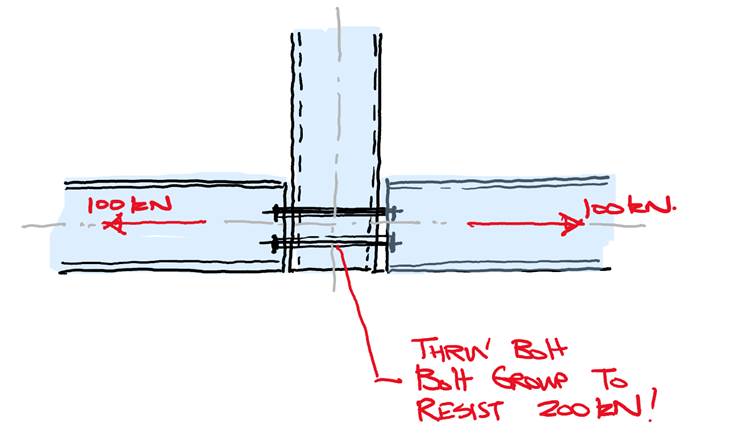MIStructE_IRE
Structural
- Sep 23, 2018
- 816
Hi,
Perhaps someone can tell me if I’m going crazy here.. The bottom joint in a truss is shown below where I have 100kN opposing tension forces. If I balance the forces I get 100kN.
The fabricator is proposing a through bolt connection which I believe needs to be designed for 200kN tension as the bolt is being pulled from both sides.
Its the classic tug of war! Is the tension force double at the joint or am i going crazy..?
Thanks!

Perhaps someone can tell me if I’m going crazy here.. The bottom joint in a truss is shown below where I have 100kN opposing tension forces. If I balance the forces I get 100kN.
The fabricator is proposing a through bolt connection which I believe needs to be designed for 200kN tension as the bolt is being pulled from both sides.
Its the classic tug of war! Is the tension force double at the joint or am i going crazy..?
Thanks!




![[bigsmile] [bigsmile] [bigsmile]](/data/assets/smilies/bigsmile.gif) can you use a couple of end plates with a bolt on either side?
can you use a couple of end plates with a bolt on either side?![[hourglass] [hourglass] [hourglass]](/data/assets/smilies/hourglass.gif)